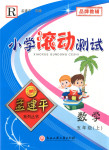题目内容
根据短文内容,从短文后的选项中选出能填入空白处的最佳选项。选项中有两项为多余选项。
A short guide to surviving a post-election Thanksgiving
Thanksgiving in the US is a celebration of the blessings of the previous year. This time it included one of the most divisive presidential campaigns. Even now it is over, the possibility of argument has not disappeared. Here we have some tips for you to survive this Thanksgiving.
●Cover up any signal of union
It might be fine to have your Hillary bumper sticker in New York, but it isn't going to go down well in Wyoming, where 70% voted Trump. Similarly, your "I love Trump" T-shirt will probably not be popular in California, where 62% voted Hillary.1..
●Practice your facial expression beforehand
They say a picture tells 1,000 words. Your face is the same. 2.You need to invest some energy in making sure your true feelings are completely buried. Ten minutes in front of the mirror should be enough to perfect your neutral face. 3.Well, we suggest closing them. Easy.
●Have a list of neutral topics for the dinner table
The weather is A favorite subject of the British. It is inoffensive, bland and can provide a good half-hour's chat, if done well. Everyone has an opinion on whether or not it is colder/hotter/wetter/windier than last year/10 years ago/when they were little. You can involve the whole family.4.With Clinton and Trump supporters largely split on whether climate change exists, it could inadvertently lead to politics. So it's maybe trickier for Americans than the weather-worn Brits. 5.After all, the rivalry between your American football team of choice and your cousin's may have a long and vitriolic history, but it is likely to be less poisonous than the current differences in your politics.
A. Sports may not be a neutral subject.
B. Biting your lip is simply not enough this holiday season.
C. There are hundreds of outstanding topics for Thanksgiving.
D. There is one slight downfall to this particular favorite.
E. Are you one of those people whose eyes always tell the truth?
F. So we advise leaving the T-shirt at home, and covering up the stickers.
G. It would be fine, if people of different opinions would not spend Thanksgiving together.
 孟建平小学滚动测试系列答案
孟建平小学滚动测试系列答案

 of the best memories. Finally we reached the top of Kilimanjaro in bright blue skies.
of the best memories. Finally we reached the top of Kilimanjaro in bright blue skies.